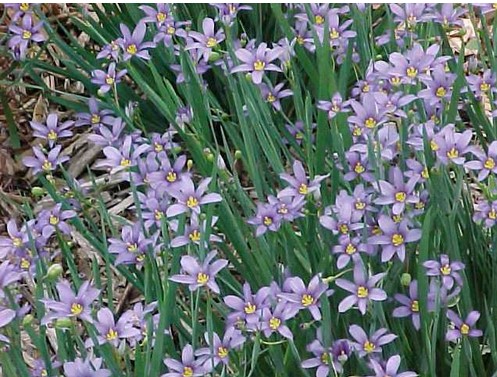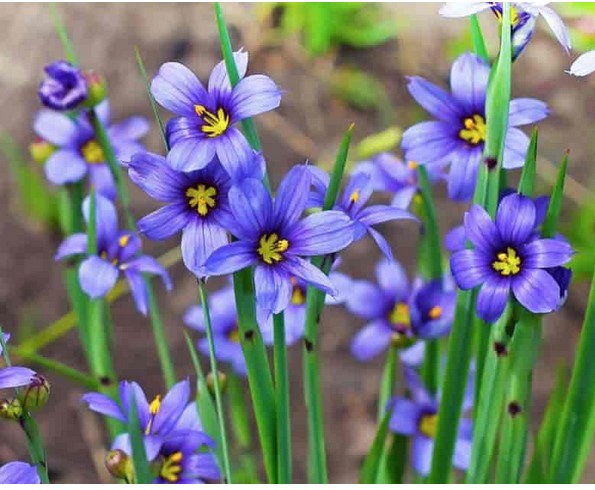Blue-Eyed Grass
Sisyrinchium angustifolium


Characteristics
- Type: Perennial
- Zone: 4 – 9
- Height: 1.5 – 2 Feet
- Spread: 6 – 12 Inches
- Bloom Time: May to June
- Bloom Description: Blue
- Texas Native
- Sun: Full Sun, Part Shade
- Water: Medium
- Maintenance: Medium
- Flower: Showy, Good Cut
- Attracts: Bees, Birds
- Tolerates: Heavy Shade
- Suggested Use: Ground Cover, Naturalize
Culture
Blue-Eyed Grass grows best in medium moisture, well-drained soil in full sun. Tolerates light shade. Prefers consistently moist soils that do not dry out, but drainage must be good. Will freely self-seed in optimum growing conditions. Plantings may be sheared back after bloom to avoid any unwanted self-seeding and/or to tidy foliage for remaining part of the growing season. Blue-Eyed Grass plants may need to be divided every 2-3 years to keep plantings vigorous.
Noteworthy Characteristics
Sisyrinchium angustifolium, commonly called blue-eyed grass, is noted for its violet-blue flowers and branched flowering stems. Though its foliage is grass-like, the blue-eyed grasses belong to the iris family not the grass family. It is a clump-forming perennial that features a tuft of narrow grass-like leaves (to 3/16″ wide) typically growing to 12″ (less frequently to 20″) tall. Clusters of violet-blue flowers (to 1/2″ across), each with 6 pointed petals and a yellow eye, appear in spring on stalks growing from leaf-like bracts atop usually branched flowering stems which are distinctively flattened.
Problems
No serious insect or disease problems. This short-lived perennial will decline if allowed to dry out. Heavy mulch causes crown rot and rich, organic soils encourage rank, vegetative growth.
Garden Uses
Best naturalized in informal garden areas such as cottage gardens, woodland gardens, wild gardens or native plant areas. Also effective in border fronts and rock gardens. Also effective as an edger for paths or walkways.